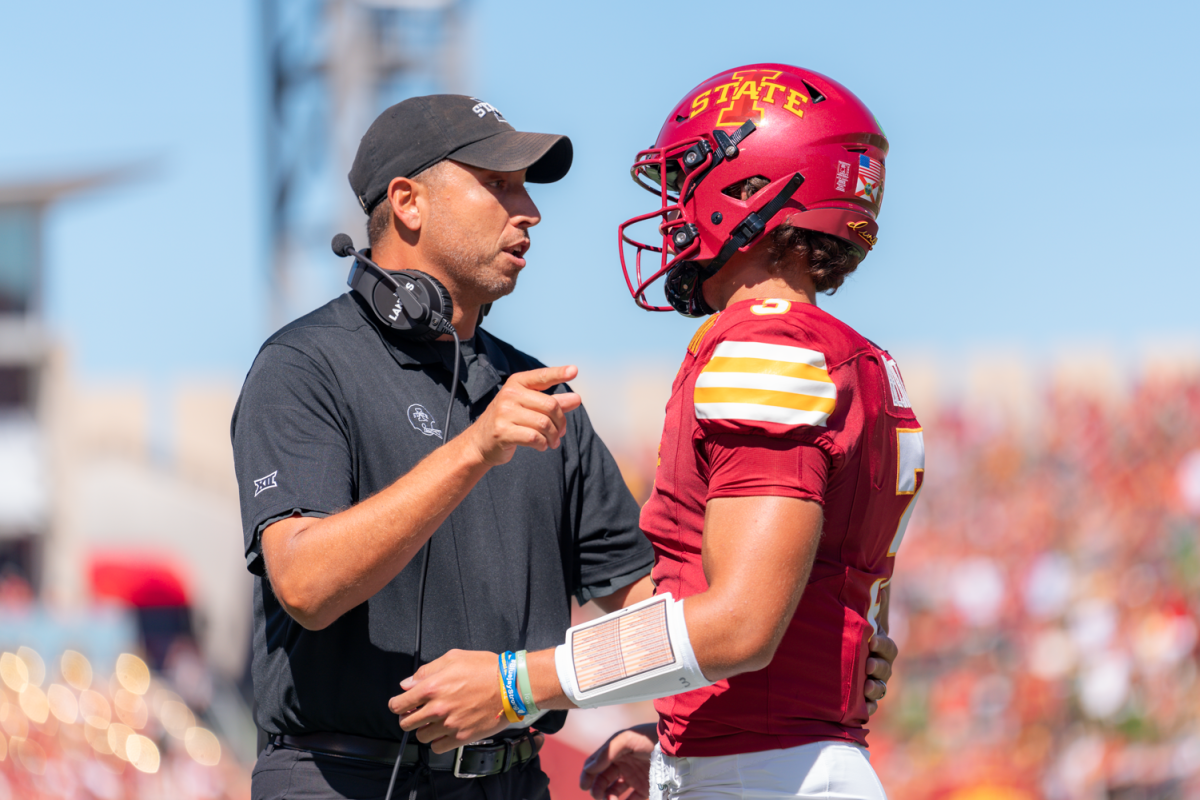Disordered eating patterns may lead to more serious problems
September 25, 2000
The lives of some college men and women are affected by disordered eating patterns that can lead to more serious eating disorders such as anorexia and bulimia, experts said. “There is a continuum of disordered eating that comes before anorexia and bulimia,” said H. Brooks Morse, staff psychologist and coordinator of eating disorder services for ISU Student Counseling Services. An eating disorder is an illness that meets specific criteria for a psychological problem, such as anorexia, bulimia or binging disorder. Disordered eating, however, is any thought or action that can lead to other problems or eating disorders, said Paulette Stronczek, staff psychologist for ISU Student Counseling Services. People who suffer from disordered eating may have one or more symptoms of an eating disorder but do not display all the necessary components, Morse said. Looking at the scale daily, feeling guilty after eating, throwing up occasionally after eating, having thoughts consumed by food and “bouncing from fad diet to fad diet” are ways that disordered eating can display itself, Stronczek said. Eunice Bassler, adjunct instructor of food science and human nutrition, said not paying attention or paying too much attention to making healthy food choices, avoiding foods you like and ignoring the body’s hunger signals are other examples of disordered eating. Carla, who spoke on condition of anonymity, is an ISU student who suffered from disordered eating in her early teens. “I was super obsessive about food,” she said. “Fat scared me to death.” Carla said by limiting herself to 1,000 calories and five to 10 grams of fat per day, she was able to lose weight and experience hunger, which helped her feel she was accomplishing something, she said. Disordered eating can stem from boredom, stress, procrastination, fear and loneliness, said Becky Hammitt, registered dietitian at the ISU Student Wellness Center. “Many college students feel like they are out of control, and they use food in an attempt to gain control,” said Hammitt, graduate student in health and human performance. These factors, combined with pressure from the media to be thin, have led to an increased incidence in disordered eating. “Disordered eating is very prevalent, particularly now, and it is just getting worse,” Morse said. This is largely due to the media, who have “pushed us and our culture to extremes,” she said. “At one time in history we idealized Marilyn Monroe who was a size 14, and then in the ’70s switched to a 90-pound Twiggy,” Morse said. Stronczek said the diet industry also plays a role in disordered eating. “You can’t turn the channel without seeing a new diet commercial, and the models look a way that most could never look,” she said. Bassler said because of the overemphasis on weight in society, an abnormal body size is seen as normal. “We’ve made a connection between having a small body size and being successful, and it’s a deception,” she said. Disordered eating is not a problem only for women, Stronczek said. Men starving themselves to lose weight for sports, cutting out all fat to get a lean, muscular body and exercising a lot without compensating for calories are examples of disordered eating that men face, she said. Bassler said the key to regaining control over disordered eating is to realize that normal eating patterns are enjoyable, deliberate and internally regulated. This translates to balancing foods people like to eat with healthy foods and listening to the internal hunger cues your body sends, Bassler said. “Sometimes you’re just hungry,” Morse said. If this hunger is ignored, the result can be disordered eating in the form of binging on large amounts of food when unable to ignore the hunger any longer, she said. Stronczek said she recommends students come to Student Counseling Services if they have disordered eating habits. “It’s nice to catch people early enough so they don’t develop an eating disorder,” she said Stronczek also said if help is sought early on, treatment for disordered eating may be shorter. Help in the form of individual counseling may be found at Student Counseling Services or the ISU Student Wellness Center. Group counseling is also available at Student Counseling. Some students may not seek help for disordered eating because they feel they do not have a big enough problem, Stronczek said. “They don’t have to feel they have to have a problem that is so big,” Stronczek said. “We would be thrilled to be working with students with disordered eating at an early stage in order to prevent a bigger problem later on.”






